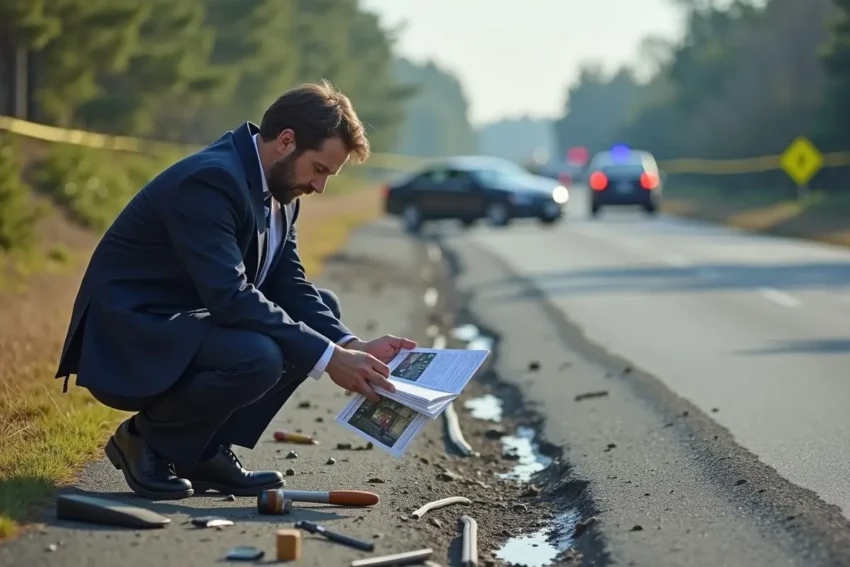When serious accidents lead to litigation, facts alone are rarely enough to persuade a jury. Conflicting eyewitness testimony, incomplete police reports, and complex crash dynamics often create more confusion than clarity. In such situations, accident reconstruction proves to be a crucial tool.
By blending physics, engineering, and advanced technology, experts can recreate events in a way that is both scientifically precise and visually compelling. Law firms such as Milanfar Law Firm increasingly rely on this specialized discipline to cut through uncertainty, making accident reconstruction a cornerstone of high-stakes injury trials.
Physics as the Foundation
Accident reconstruction begins with fundamental principles of physics. Experts analyze skid marks, vehicle damage, and debris patterns to calculate speed, angle of impact, and stopping distances. Using equations of motion, they can estimate the speed of a vehicle before a collision or determine whether a driver had sufficient time to brake.
For example, in a rear-end collision, reconstruction specialists may examine tire marks and vehicle crush depth to prove that the striking driver was traveling well above the speed limit. These scientific findings often contradict initial assumptions or self-serving statements by at-fault drivers. By grounding arguments in physics, attorneys present a factual narrative that resists speculation and subjectivity, thereby lending credibility to their claims.
Advanced Technology: Precision in Detail
The days of relying solely on diagrams and photographs are over. Modern reconstruction incorporates cutting-edge tools that provide far greater accuracy:
- Laser scanning and photogrammetry create exact 3D digital models of crash scenes. This technology allows experts to measure every detail—down to millimeters—long after debris has been cleared.
- High-speed cameras capture collisions during crash testing, helping experts explain vehicle behavior at the moment of impact.
- Sensor-equipped drones offer aerial perspectives of accident sites, documenting road conditions, traffic patterns, and visibility in ways that are impossible from ground level.
These methods ensure that reconstructions are not just theoretical but are supported by precise and objective data.
Virtual Reality: Changing Jury Perception
Virtual reality (VR) has transformed accident reconstruction from static exhibits into immersive experiences. With VR headsets, jurors and attorneys can literally step into the scene of the accident. Instead of watching a flat animation, they can view the crash from multiple perspectives—driver, pedestrian, or bystander—gaining an intuitive understanding of how the event unfolded.
This immersive approach can be compelling in cases involving catastrophic injuries. A juror who virtually experiences the force of impact may better appreciate the severity of the victim’s injuries than if they were only shown photographs. While courts remain cautious about overreliance on emotional impact, judges increasingly admit VR evidence because it is tied to complex data and scientific analysis.
How Reconstruction Influences Liability
Accident reconstruction often proves decisive in determining liability. Consider multi-vehicle collisions where each driver blames another, or trucking accidents where black box data conflicts with eyewitness testimony. By analyzing vehicle dynamics, road conditions, and driver behavior, reconstruction experts can not only determine what happened but also explain why.
For example:
- In a rollover accident, reconstruction may reveal that a poorly designed guardrail contributed to the severity of the crash.
- In pedestrian injury cases, calculations may demonstrate whether a driver could have avoided hitting someone based on reaction time and stopping distance.
By reconstructing these scenarios, attorneys transform technical disputes into clear cause-and-effect explanations, helping juries assign responsibility with confidence.
Strengthening Expert Testimony
Accident reconstruction also enhances the credibility of expert witnesses. When an engineer’s verbal explanation is paired with simulations, diagrams, and VR demonstrations, jurors are more likely to trust the analysis. The evidence reinforces the expert’s conclusions, making them appear less theoretical and more demonstrably accurate.
Equally important, reconstruction evidence helps preempt counterarguments. If a defense attorney claims that eyewitnesses were mistaken about the vehicle’s speed, a reconstruction based on physics and digital modeling provides objective proof that outweighs human error.
Why It Matters in High-Stakes Trials
High-stakes injury cases often involve millions of dollars in potential damages and life-altering injuries for plaintiffs. In such cases, uncertainty favors the defense. Accident reconstruction minimizes that uncertainty. It transforms complex data into a compelling narrative that juries can both understand and believe.
For plaintiffs, reconstruction ensures that their story is not dismissed as speculation. For attorneys, it provides a robust visual and scientific foundation that can tip the balance between a modest settlement and a just verdict.
Conclusion
Accident reconstruction is no longer a luxury reserved for rare cases—it is increasingly indispensable in modern litigation. By uniting physics, cutting-edge technology, and expert testimony, reconstructions create clarity where confusion once reigned. They empower juries to see beyond conflicting accounts and ground their decisions in objective science.
At Milanfar Law Firm and similar practices, this tool has become a central component of trial strategy. In a courtroom where the stakes are measured in both justice and financial recovery, accident reconstruction often provides the evidence that makes all the difference.

